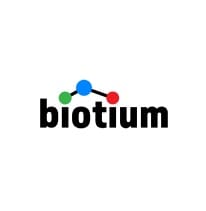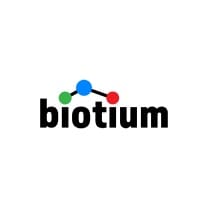Check out the latest news from Biotium USA, a leading provider of innovative fluorescent solutions for scientists.
Biotium is devoted to providing high-quality and innovative fluorescent tools that fuel scientific discovery.
Since its founding in 2001, Biotium has developed over 30 patented technologies including GelRed® dyes, CF® Dyes, NucView® Caspase-3 Substrates, EvaGreen® Dyes, and TrueBlack® Background Reducers.
-
-
BIOTIUM | Biotium’s cytoplasm and lipid imaging probes
Biotium’s cytoplasm and lipid imaging probes aid discovery of microglial triglyceride metabolism role in neurodegenerative immunity
Read More -
BIOTIUM | Protocol: Fluorescent Western Blotting
To learn more about western blotting, including the advantages of near-infrared fluorescence detection, see Biotium’s webinar: Fundamentals of Western Immunoblotting: Chemiluminescence and NIR Multiplex Imaging (49:44). Materials required: Workflow overview: Total protein prestain kit (optional) Ponceau S (optional) Blocking buffer (see general considerations below) PBS or TBS with 0.1% Tween®-20 (see general consideration below) Primary […]
Read More -
BIOTIUM | Protocol: DNA Probe Labelling by PCR
This protocol can be adapted to use dUTP or dCTP labelled with other dyes, biotin, or haptens like digoxigenin. See Biotium’s full selection of labelled nucleotides.
Read More -
BIOTIUM | Protocol: Using Pluronic® F-127 to Solubilize Dyes for Cell Loading
Pluronic® F-127 is a nonionic detergent useful for solubilizing hydrophobic molecules in aqueous solutions. Pluronic® F-127 is commonly used to solubilize hydrophobic AM ester forms of fluorescent indicator dyes for calcium and other ions for loading of the dyes into cells. It also can be used to solubilize other hydrophobic dyes or compounds to facilitate […]
Read More -
BIOTIUM | Protocol: Succinimidyl Ester Labelling of Protein Amines
Dyes functionalized with succinimidyl ester (NHS Ester or SE) groups can be used to covalently label proteins on primary amines (typically lysine residues) to form a stable amide linkage.
Read More -
BIOTIUM | Protocol: Maleimide Labelling of Protein Thiol
Maleimide labelling of antibodies can be used as an alternative to succinimidyl ester labelling of amines, for antibodies where amine labelling affects the antibody binding affinity.
Read More -
BIOTIUM | Protocol: Aminooxy Labelling of Glycoproteins
Aminooxy labelling can be used to conjugate glycoproteins after oxidation of the carbohydrates to generate aldhehyde groups.
Read More


